Laser Capture Microdissection Market Size
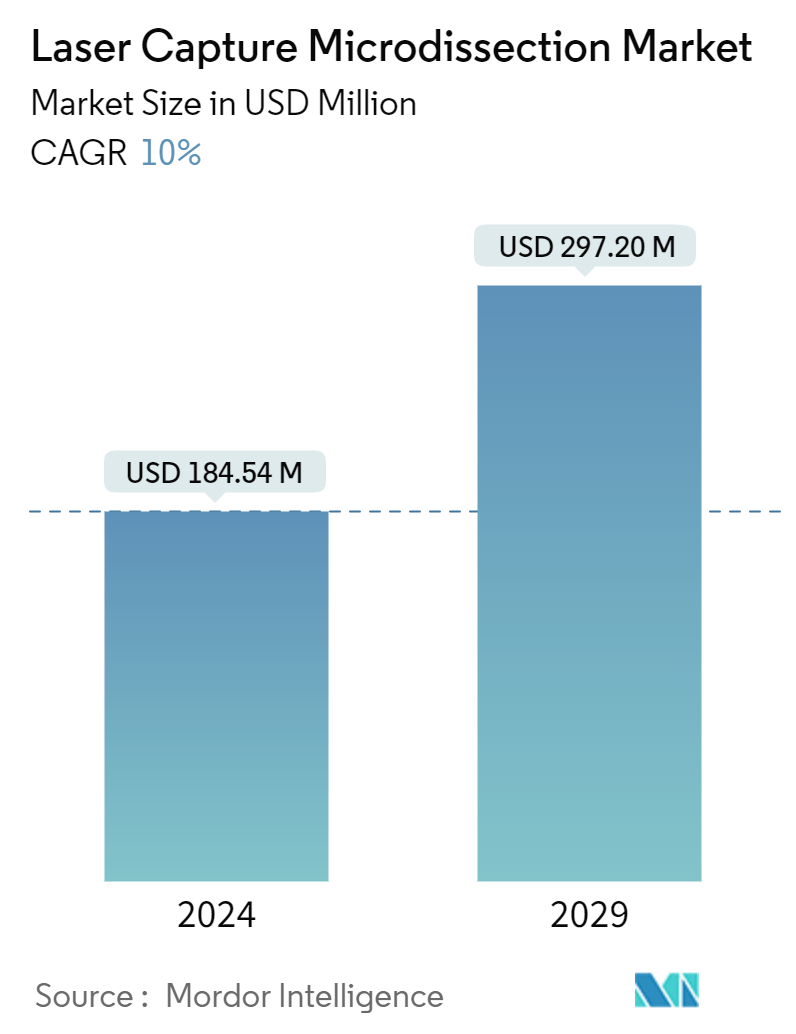
| Study Period | 2019 - 2029 |
| Market Size (2024) | USD 184.54 Million |
| Market Size (2029) | USD 297.20 Million |
| CAGR (2024 - 2029) | 10.00 % |
| Fastest Growing Market | Asia Pacific |
| Largest Market | North America |
Major Players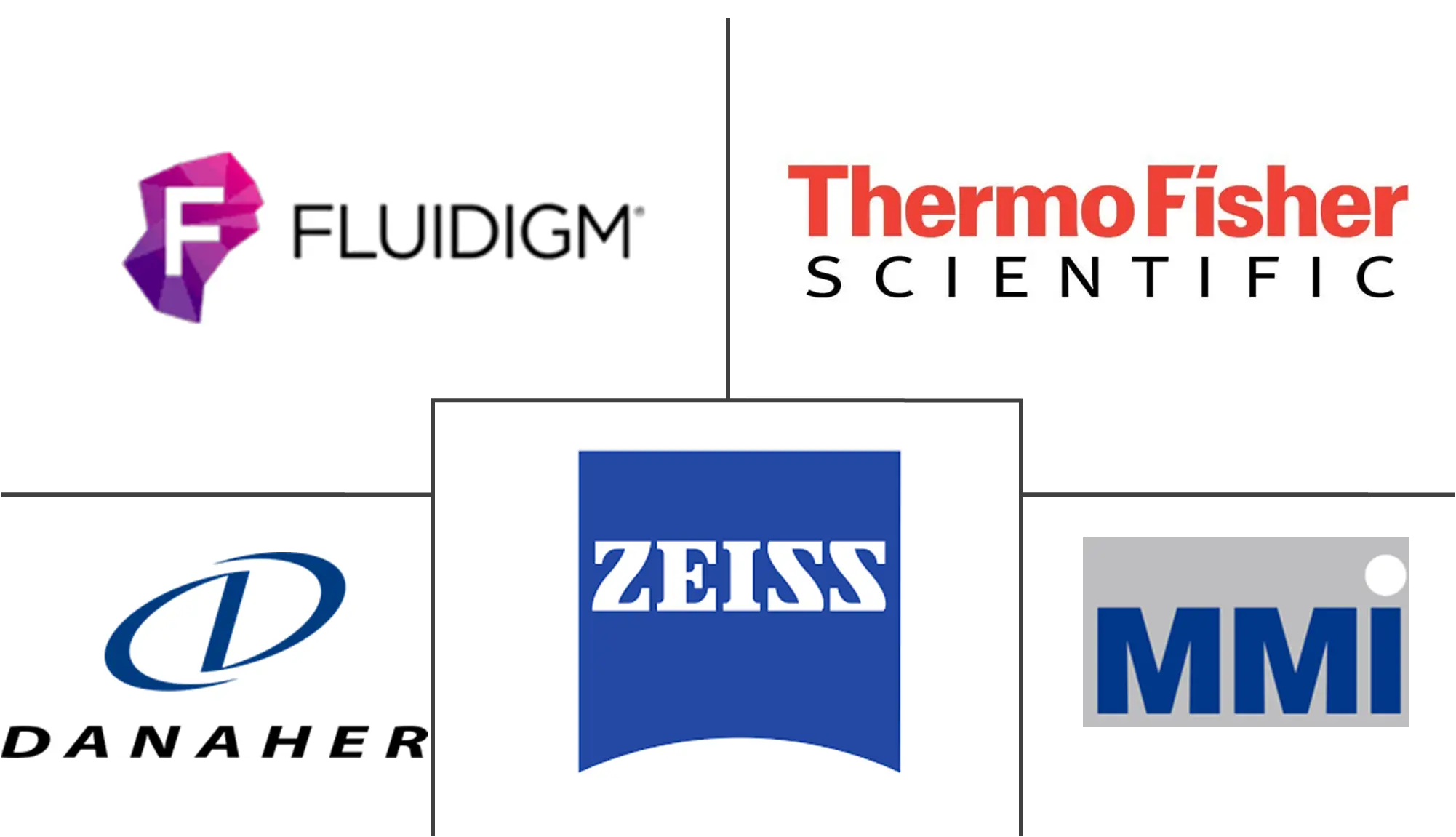
*Disclaimer: Major Players sorted in no particular order |
Laser Capture Microdissection Market Analysis
The Laser Capture Microdissection Market size is estimated at USD 184.54 million in 2024, and is expected to reach USD 297.20 million by 2029, growing at a CAGR of 10% during the forecast period (2024-2029).
The market studied is being driven by factors, such as an increase in the R&D funding, along with the increasing healthcare expenditure and technological advancements in the Laser Capture Microdissection (LCM).
According to the Office for National Statistics (ONS), the total R&D expenditure in the United Kingdom is increasing rapidly. During 2016, it was around GBP 33.2 billion, which increased in 2017 and reached around GBP 34.8 billion. Similarly, in the United States, the investments in medical R&D was USD 39.5 billion in 2017. This indicates that there is a high investment done in healthcare in the major countries.
Trends are showing a return to growth, with only minor caution, across most areas of R&D spending. The increase in R&D investment in Asia, particularly India, and the consecutive annual growth in R&D spending in the country, indicate a period of stability, security, and healthy competition across the industrial sectors. A national survey by the Central Government of India, on the status of R&D in the country, has shown that India's Gross Expenditure on R&D (GERD) has more than tripled, from INR 241.17 billion (INR 24,117 crore) to INR 853.26 billion (INR 85,326 crore) during the decade, from 2004-2005 to 2014-2015.
Furthermore, it is indicated that the rising R&D investment will have a positive impact on the market studied and the market will grow rapidly over the forecast period.
Laser Capture Microdissection Market Trends
Diagnostics is Expected to Register a Highest CAGR Over the Forecast Period
Currently, microdissection of tissue sections and cytological preparations have been used increasingly for the isolation of homogeneous, morphologically identified cell populations, thus, overcoming the obstacle of tissue complexity. In conjunction with sensitive analytical techniques, such as the polymerase chain reaction, microdissection allows precise in vivo examination of cell populations, such as carcinoma in situ, or the malignant cells of Hodgkin's disease, which are otherwise inaccessible for conventional molecular studies.
Laser Capture Microdissection (LCM) may allow the establishment of "genetic fingerprints" of specific pathological lesions, especially malignant neoplasms. In addition to the identification of new diagnostic and prognostic markers, this approach could help in establishing individualized treatment, tailored to the molecular profile of a tumor. Thus, the increased application of LCM in diagnostics is augmenting the growth of the market.
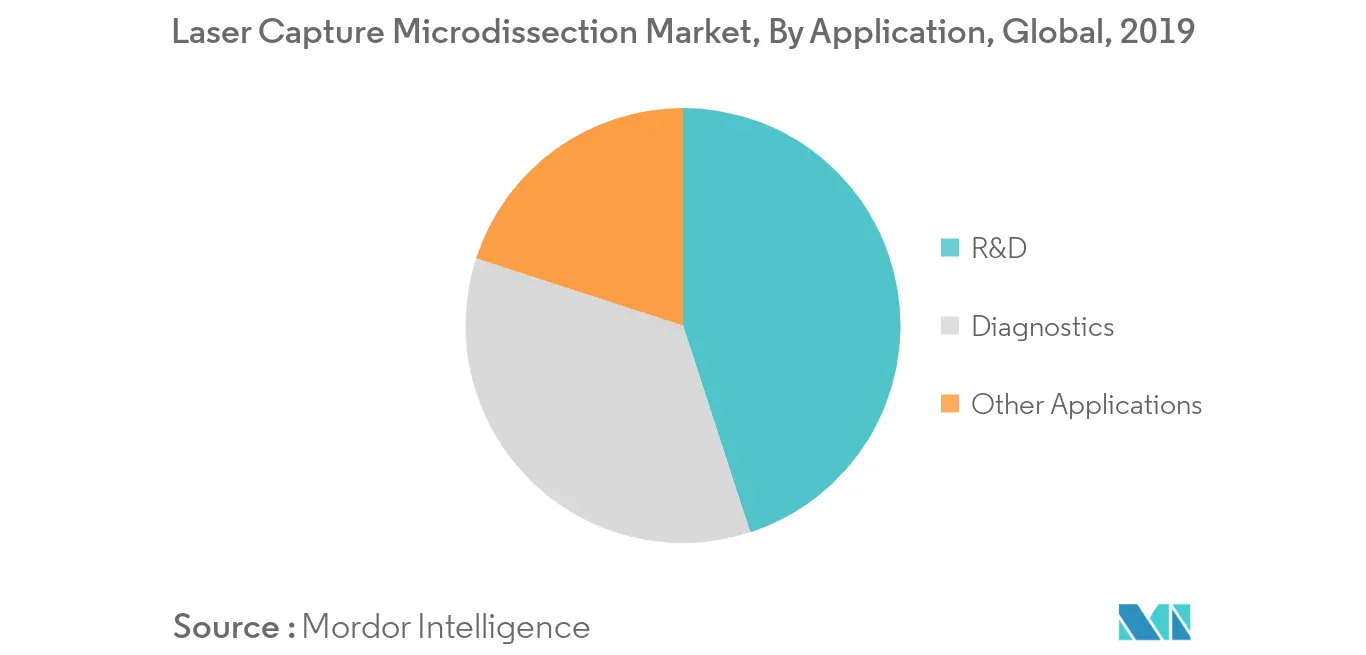
North America to Dominate the Market
Geographically, North America is dominating the global laser capture micro-dissection market, primairly due to the availability of skilled personnel. Also, due to robust healthcare infrastructure in the United States, which is coupled with extensive funding for medical research projects. This will continue to fuel the adoption of laser capture micro-dissection in North America. It has been observed that Asia-Pacific will be the fastest-growing market for laser capture microdissection, mainly due to the rising investment in healthcare R&D in Asian countries.
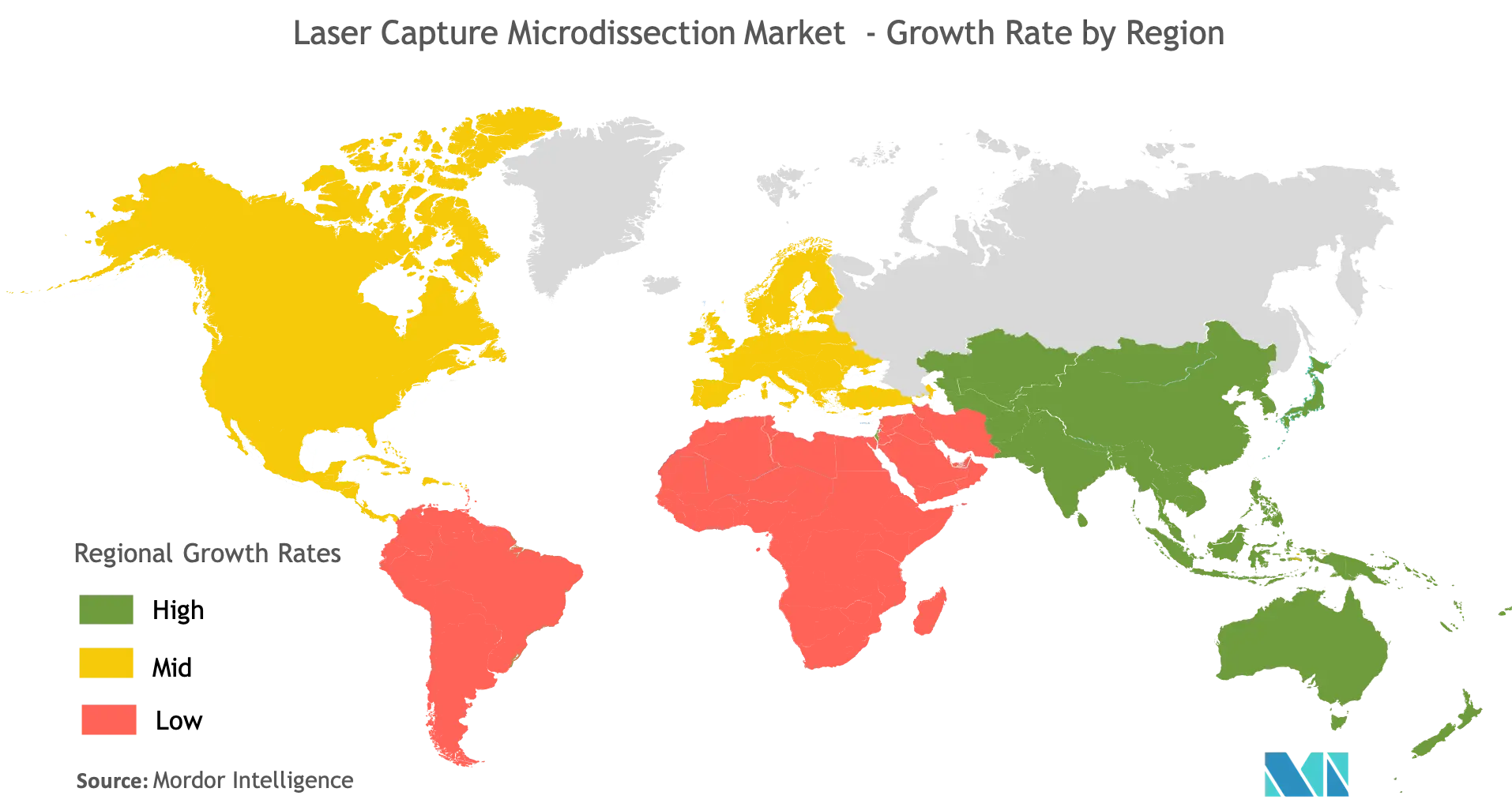
Laser Capture Microdissection Industry Overview
The laser capture microdissection market is moderately competitive and consists of the global, as well as local players. In countries, like India, there are several local players and these companies are holding a substantial share of the market. A similar scenario was observed in developed countries, such as the United States and a few European countries. With the rising focus on R&D, it is believed that more companies will enter the market in the coming future.
Laser Capture Microdissection Market Leaders
-
Thermo Fisher Scientific
-
Danaher Corporation (Leica Microsystems)
-
Molecular Machines and Industries GmbH
-
Carl Zeiss Meditec AG
-
Fluidgm Corporation
*Disclaimer: Major Players sorted in no particular order
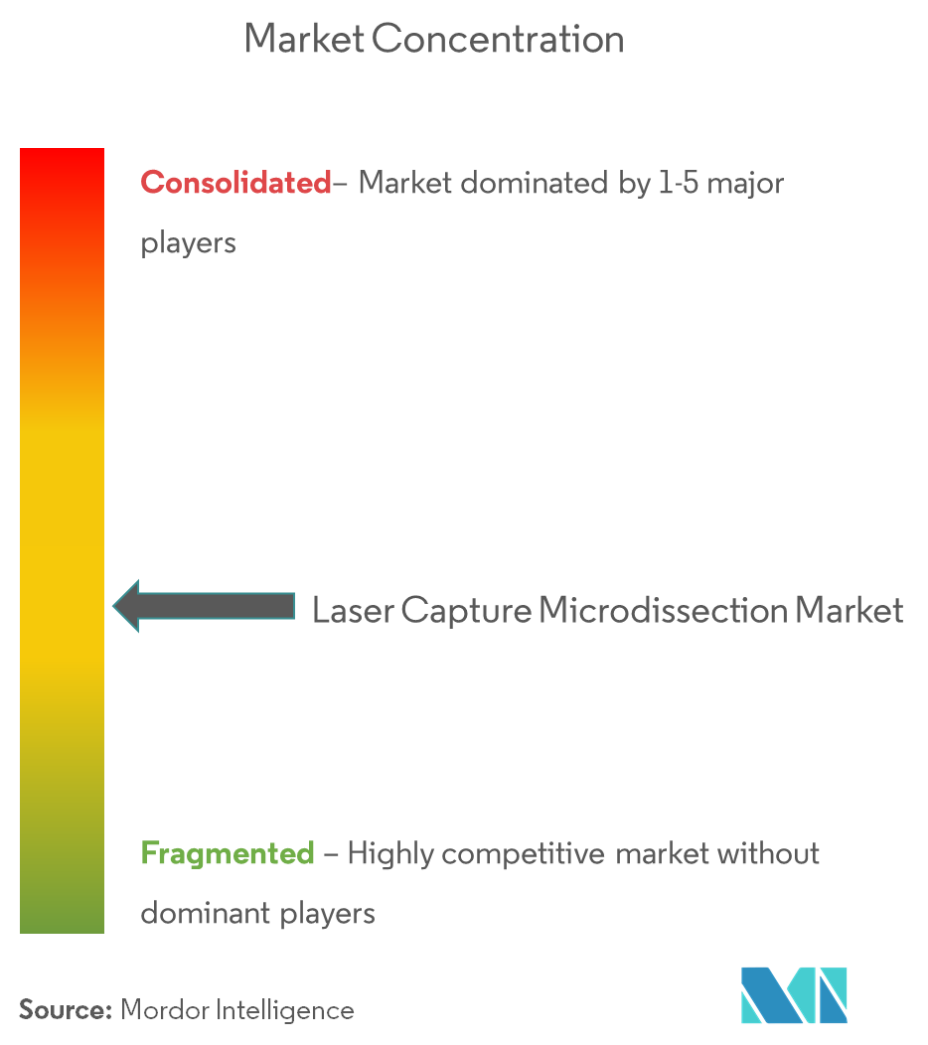
Laser Capture Microdissection Market News
- In December 2023, Danaher Corporation completed the acquisition of Abcam plc. Abcam will be an independent entity and brand within Danaher's Life Sciences segment, which includes laser capture microdissection devices. This move aligns with Danaher's strategy to leverage its technology in mapping complex diseases and expediting drug discovery.
- In November 2023, Laxco Inc. launched its Accuva Cellect Laser Capture Microdissection (LCM) System in the United States. This dual-laser LCM system's advanced features enable seamless cutting of dense tissues and large areas in a single pass.
Laser Capture Microdissection Market Report - Table of Contents
1. INTRODUCTION
- 1.1 Study Deliverables
- 1.2 Study Assumptions
- 1.3 Scope of the Study
2. RESEARCH METHODOLOGY
3. EXECUTIVE SUMMARY
4. MARKET DYNAMICS
- 4.1 Market Overview
-
4.2 Market Drivers
- 4.2.1 Increase in R&D Funding and Healthcare Expenditure
- 4.2.2 Technical Advantages of LCM
-
4.3 Market Restraints
- 4.3.1 High Cost of Instruments, Accessories, and Maintenance
- 4.3.2 Lack of Skilled Professionals
-
4.4 Porter's Five Force Analysis
- 4.4.1 Threat of New Entrants
- 4.4.2 Bargaining Power of Buyers/Consumers
- 4.4.3 Bargaining Power of Suppliers
- 4.4.4 Threat of Substitute Products
- 4.4.5 Intensity of Competitive Rivalry
5. MARKET SEGMENTATION
-
5.1 By Product
- 5.1.1 Instruments
- 5.1.2 Consumables
- 5.1.3 Software and Services
-
5.2 By System Type
- 5.2.1 Ultravoilet LCM
- 5.2.2 Infrared LCM
- 5.2.3 Other System Types
-
5.3 By Application
- 5.3.1 R&D
- 5.3.2 Diagnostics
- 5.3.3 Other Applications
-
5.4 By End-User
- 5.4.1 Academic and Government Research Institutes
- 5.4.2 Hospitals
- 5.4.3 Pharmaceutical, Biotechnology Companies, and CROs
-
5.5 Geography
- 5.5.1 North America
- 5.5.1.1 United States
- 5.5.1.2 Canada
- 5.5.1.3 Mexico
- 5.5.2 Europe
- 5.5.2.1 Germany
- 5.5.2.2 United Kingdom
- 5.5.2.3 France
- 5.5.2.4 Italy
- 5.5.2.5 Spain
- 5.5.2.6 Rest of Europe
- 5.5.3 Asia-Pacific
- 5.5.3.1 China
- 5.5.3.2 Japan
- 5.5.3.3 India
- 5.5.3.4 Australia
- 5.5.3.5 South Korea
- 5.5.3.6 Rest of Asia-Pacific
- 5.5.4 Middle-East and Africa
- 5.5.4.1 GCC
- 5.5.4.2 South Africa
- 5.5.4.3 Rest of Middle-East and Africa
- 5.5.5 South America
- 5.5.5.1 Brazil
- 5.5.5.2 Argentina
- 5.5.5.3 Rest of South America
6. COMPETITIVE LANDSCAPE
-
6.1 Company Profiles
- 6.1.1 Carl Zeiss Meditec AG
- 6.1.2 Thermo Fisher Scientific
- 6.1.3 Danaher Corporation (Leica Microsystems)
- 6.1.4 Molecular Machines & Industries GmbH
- 6.1.5 Fluidgm Corporation
- 6.1.6 Caresbio Laboratory LLC
- 6.1.7 VitroVivo Biotech
- 6.1.8 GnomeDX
- *List Not Exhaustive
7. MARKET OPPORTUNITIES AND FUTURE TRENDS
** Subject To AvailablityLaser Capture Microdissection Industry Segmentation
Laser Capture Micro-dissection (LCM) is a contact and contamination-free sample preparation technology for isolating specific single cells or entire areas of tissues from a wide variety of samples, mainly by using direct microscopic visualization. It is an efficient method for capturing pure cells populations in molecular studies.
| By Product | Instruments | |
| Consumables | ||
| Software and Services | ||
| By System Type | Ultravoilet LCM | |
| Infrared LCM | ||
| Other System Types | ||
| By Application | R&D | |
| Diagnostics | ||
| Other Applications | ||
| By End-User | Academic and Government Research Institutes | |
| Hospitals | ||
| Pharmaceutical, Biotechnology Companies, and CROs | ||
| Geography | North America | United States |
| Canada | ||
| Mexico | ||
| Geography | Europe | Germany |
| United Kingdom | ||
| France | ||
| Italy | ||
| Spain | ||
| Rest of Europe | ||
| Geography | Asia-Pacific | China |
| Japan | ||
| India | ||
| Australia | ||
| South Korea | ||
| Rest of Asia-Pacific | ||
| Geography | Middle-East and Africa | GCC |
| South Africa | ||
| Rest of Middle-East and Africa | ||
| Geography | South America | Brazil |
| Argentina | ||
| Rest of South America |
Laser Capture Microdissection Market Research FAQs
How big is the Laser Capture Microdissection Market?
The Laser Capture Microdissection Market size is expected to reach USD 184.54 million in 2024 and grow at a CAGR of 10% to reach USD 297.20 million by 2029.
What is the current Laser Capture Microdissection Market size?
In 2024, the Laser Capture Microdissection Market size is expected to reach USD 184.54 million.
Who are the key players in Laser Capture Microdissection Market?
Thermo Fisher Scientific, Danaher Corporation (Leica Microsystems), Molecular Machines and Industries GmbH, Carl Zeiss Meditec AG and Fluidgm Corporation are the major companies operating in the Laser Capture Microdissection Market.
Which is the fastest growing region in Laser Capture Microdissection Market?
Asia Pacific is estimated to grow at the highest CAGR over the forecast period (2024-2029).
Which region has the biggest share in Laser Capture Microdissection Market?
In 2024, the North America accounts for the largest market share in Laser Capture Microdissection Market.
What years does this Laser Capture Microdissection Market cover, and what was the market size in 2023?
In 2023, the Laser Capture Microdissection Market size was estimated at USD 166.09 million. The report covers the Laser Capture Microdissection Market historical market size for years: 2019, 2020, 2021, 2022 and 2023. The report also forecasts the Laser Capture Microdissection Market size for years: 2024, 2025, 2026, 2027, 2028 and 2029.
Laser Capture Microdissection Industry Report
Statistics for the 2024 Laser Capture Microdissection market share, size and revenue growth rate, created by Mordor Intelligence™ Industry Reports. Laser Capture Microdissection analysis includes a market forecast outlook to 2029 and historical overview. Get a sample of this industry analysis as a free report PDF download.



